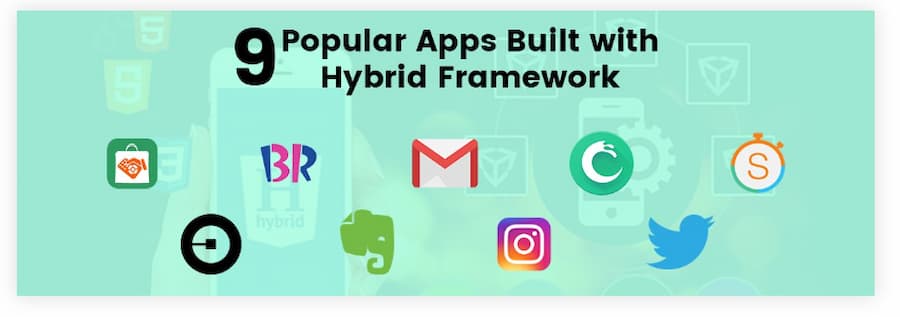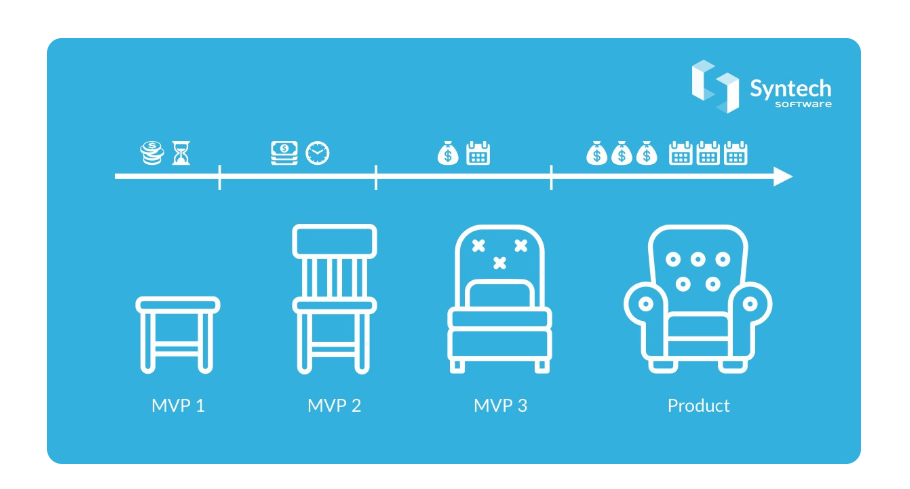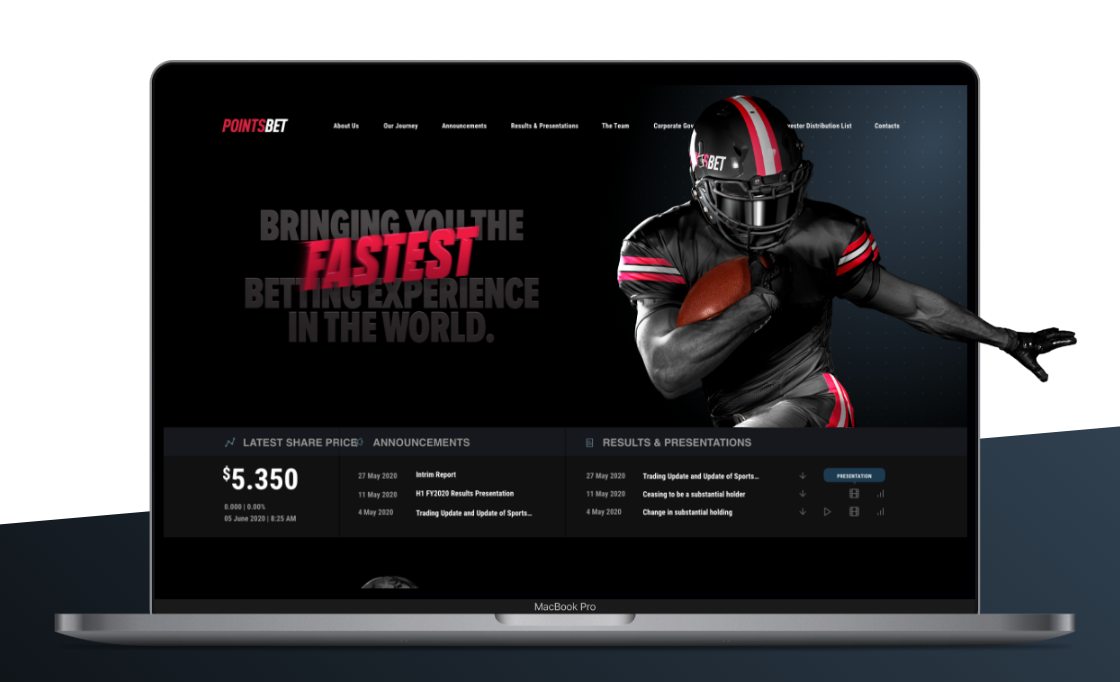Are Hybrid Apps All Hype? Pros, Cons, and Alternatives in 2025

Big companies are jumping on the bandwagon of mobile apps.
Iconic brands like Starbucks and Nike attribute around a quarter of their pandemic-era revenue to these mobile applications, making them a great investment in this digital landscape..
Many tech companies are also cashing in on mobile apps, particularly hybrid apps. For example, Gmail, Twitter, and Instagram are all hybrid applications that have raked in revenue for their respective mother companies.

Source: Excellent Webworld
Given that these household names are hybrid apps, are these applications all they’re cracked up to be?
Let’s find out!
In this article, you’ll learn what hybrid apps are, their upsides and downsides, and whether they are the best applications out there.
What is a hybrid app?
A hybrid app is a mobile application that mixes certain elements of native apps and web apps. This means a hybrid app functions like an installed native app but uses web technologies and Internet connectivity to accomplish certain tasks.
Since hybrid mobile apps combine features from native apps and web apps, it’s important to learn what these apps are. So, let’s explore further.
What are native apps?
Native apps are software applications built using a programming language specific to a mobile platform.
Each smartphone is a unique platform. A platform is the combination of a phone’s hardware and operating system (OS). For example, your phone may run iOS while my phone runs on Android OS. Our smartphone processors may also have different brands.
Therefore, if we download the same native app from an app store, we will have a slightly different version of the same app. After all, each native app can only function on one specific platform or OS.
Another thing to note about native apps is that they don’t require browsers to run. That means unlike web apps, which I’ll explain next, a native app will run after you tap its icon on your phone.
Read our article on how native apps compare to web apps if you want to learn more about this topic.
What are web apps?
Web apps are programs that depend on desktop or mobile browsers and web technologies to function.
You do two things to make a web app run. First, you click or tap your browser icon. Then, you type your web app’s URL (for example, https://drive.google.com) in the browser.
Since web apps depend on browsers to be useful, they can mostly run regardless of platform. So whether you use a desktop, laptop, Android phone, or iOS device to access a web app, it usually doesn’t matter. You can use that app as long as your browser supports it.
| Native Apps | Web Apps | |
|---|---|---|
| Features | More expansive and interactive than web apps Can leverage a mobile device’s native features |
Limited compared to native apps |
| Accessibility | Downloaded from the app stores Can be accessed via a local device and offline |
Require an internet connection and a web browser Offer cross-platform, OS, and device compatibility |
| Performance | Generally performs faster than web apps | Generally slower compared to native apps |
| Development | Require a separate codebase for iOS and Android Development is generally longer and more costly |
Require a single codebase for all platforms Development is generally shorter and less costly |
Hybrid app = Web app + native app
The best of both the web and native worlds come out in hybrid apps.
Basically, hybrid apps have the look and feel of native apps (tap-and-go). However, these hybrids are powered by technologies found in web apps. Specifically, a hybrid app’s own embedded browser enables it to run and perform tasks.
A hybrid app’s browser is embedded in a native shell, a layer of code that makes a hybrid compatible with multiple platforms.
For more information on how these three categories stack up against each other, read our article comparing native, hybrid, and web apps.
Now that you’re familiar with these apps, it’s time to weigh how hybrids stack up against their native and web-based relatives.
Advantages of hybrid apps
There are valid reasons why tech titans Google and Meta invested time and money in hybrid app development. These reasons include:
- Reduced development time and cost
- Faster initial outreach to a wider audience
- Easier scaling
Let’s take a deeper dive into each advantage.
Faster and cheaper app development
Imagine that apps are like cars and mobile platforms are the environments that the vehicles run on. Also, think of programming code as spare parts that make up apps.
The programming code used to build hybrid apps can run either on the asphalt road of the Android operating system or the rough wilderness of iOS (no bias intended, imagery for comparison purposes only). In other words, you only use one set of spare parts to build one hybrid mobile app.
More technically, hybrid apps have a common programming codebase that enables them to run on multiple platforms. This means a team of developers only needs to write code once to create one hybrid app. In addition, since many app developers are paid by the hour, the shorter average development time for hybrid apps makes them less expensive.
Meanwhile, you will need two sets of spare parts if you develop a native app that runs on both the Android and iOS platforms. So, the team of developers building this app needs to write code at least twice, once for each platform. This is because each native app has a codebase that is only compatible with one platform.
More potential users at app launch
I mentioned earlier that hybrid apps have cross-platform compatibility.
This means many users can download a certain hybrid app upon its launch on app stores, like Google Play and Apple App Store, regardless of their smartphone. On the other hand, a native app can only reach either Android or iOS users.
Since user acquisition is a key measurement of an app’s success, hybrid apps tend to win in this category. A higher number of app users usually means higher app incomes.
Scaling is a breeze
Scaling happens when an innovative business undergoes massive expansion quickly. For example, scaling occurs when hundreds or thousands of new users start using a new hybrid app. An influx of new users usually demands app updates and repairs.
Hybrids enable developers to send out one update patch and bug fix to address issues across all devices. On the other hand, native applications need one separate patch for Android devices and another for iOS phones.
This means any app business relying on a hybrid app can easily expand its operations while maintaining its user base, increasing its growth exponentially.
Disadvantages of hybrid apps
Hybrid apps are not bullet-proof, despite their many advantages. I see the following chinks in a hybrid’s armor:
- Poor user experience
- Difficult to test
Diminished user experience
Here’s the deal. Hybrid apps aren’t as tightly connected to their host mobile device (the device where the hybrids are installed) as native apps.
A native app can directly access a mobile phone’s features, like its camera, GPS, or whatever hardware and software the phone has. This is because apps like these are built using native code, a programming language highly compatible with the platform it runs on.
Meanwhile, hybrid apps don’t enjoy such a close connection to their host platforms.
A hybrid app has two components: a web application and a native shell (container). Within the native container is a web application that serves as the “engine” of a hybrid app.
In effect, the “engine” of the app connects to the phone’s hardware and software through the container. It’s this container that makes a hybrid compatible with multiple platforms.
The indirect link between a hybrid app and its host device has two effects in general:
- Less capability to display high-quality graphics
- Slower processing or loading time compared to a native app of the same caliber
A good user experience has been critical to the success of many top companies. However, since hybrid apps tend to be slow and have poor graphics, a poor user experience may cause the downfall of businesses that depend on these apps.
Testing hybrid apps is hard
A hybrid app’s power to run on multiple platforms is also its weakness.
Since this type of app should run across iOS and Android devices, testing it tends to take longer than doing the same for a platform-specific native app.
This means that though coding a hybrid app costs less on average, the testing phase might take too long, increasing the total cost of building the app.
Also, a lack of testing could result in technical issues for the hybrid in question. Studies show technical problems are a leading cause of app deletions. This figure may not seem big. But given that only 0.01% of consumer apps succeed, app businesses need cost-effective testing to minimize app deletions. Hybrid apps may not be the best way to go about this.
Alternatives to hybrid apps
If you’re looking for apps that work well and are reasonably priced, there are other options you can look into. I highly recommend considering native apps from uniquely trained developers and well-built web apps.
Native apps from specialist devs
Native apps often trump other mobile applications in terms of performance and quality. But a lot has been said about how costly native apps can be.
The cost of native apps mainly comes from the lengthier development cycle. Many developers are paid by the hour. Thus, more time spent building native apps means more money spent.
But there are always exceptions to the rule.
Our native app developers use what we call the Appetiser Baseplate and the MVP way of building apps. This method ensures our developers spend less time producing high-quality apps than many others in the industry. Our way of developing apps saves our clients money and enables them to launch apps relatively faster.

Source: Syntech Software
Contact us for a free consultation if you want to turn your idea into an awesome app business.
Quality web apps
Though web apps may not have the same intuitiveness as native or hybrid apps, they are great business workhorses.
For example, a web app became a crucial growth engine for PointsBet when it expanded from Australia to the United States. Check out our case study to learn how we helped the sports betting company grow from $100 million to $3.2 billion in just over a year.

Web apps also win in the more down-to-earth realm of daily business tasks. Storing massive files or dealing with many customers is relatively easier with these apps. In addition, many of them enable you to access and save vital documents and other content on the Internet. This ensures you have a backup in case your computer suffers damage.
Sure, you need Internet access to get the best out of web apps. But since many native and hybrid apps need some form of Internet access anyway, web apps don’t lose out that much when business is concerned.
Web apps are also good if you don’t have enough storage space to install a native application or other similar types of software.
For example, many graphic design tools take up much hard disk space, forcing you to clean up the device to find that extra bit of redundant clutter to free up the space. But thanks to a web app called Canva, all you need to edit and save works of art or other visual designs is an Internet-connected computer with a compatible browser.
Say hi or goodbye to hybrid?
Though hybrid apps are good for quick, inexpensive, and massive customer outreach, they tend to lose out in the long run. Unless developed by tech titans, hybrids often can’t compete with native and web apps when it comes to reliability and quality user experience.
However, an app’s main features, target market, and purpose determine whether it should be turned into a native app, a web app, or a hybrid.
In our mission of helping clients grow their businesses and nonprofits, we have developed native apps and web apps that propelled them from zero to maximum growth. Some have even turned into multimillion-dollar enterprises.
Have a chat with us and discover how these apps can make your dreams come true.

Jesus Carmelo Arguelles, aka Mel, is a Content Marketing Specialist by profession. Though he holds a bachelor’s degree in business administration, he also took courses in fields like computer troubleshooting and data analytics. He also has a wealth of experience in content writing, marketing, education, and customer support.


